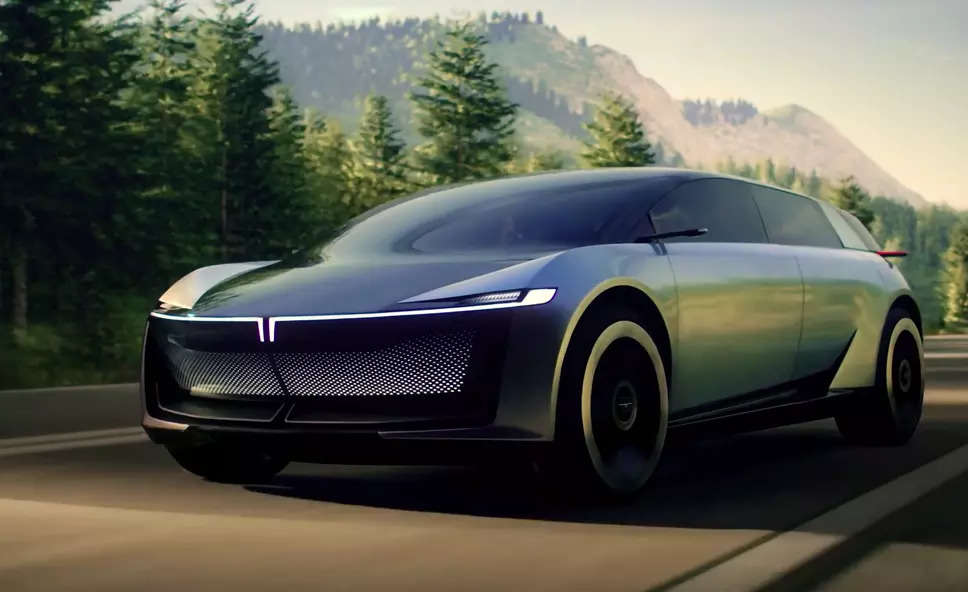
Mumbai: It was a bull-run for Tata in the emerging Indian electric passenger vehicle market, till October of last year, when a new entrant in JSW MG Motor India’s newly-launched and aggressively proceed Windsor took the pole position. With the recent twin EV launches of BE 6 and XEV 9e by old rival Mahindra, the competition is heightened. However, the market leader says it is not “perturbed”.
“We are confident that we will not get perturbed due to the short term noises, which will come because of a small market size, and multiple players jumping into this space simultaneously,” says Shailesh Chandra, MD, Tata Passenger Electric Mobility. He says Tata will lose market share as new players enter, but not the industry leadership position. The confidence is based on five “fundamentals”.
The first of these, Chandra says, is Tata’s widest portfolio of EVs. Currently, Tata Passenger Electric Mobility (TPEM) has five models in its showrooms, ranging from a sub-INR 10 lakh Tiago EV, to the range topping Curvv, priced at INR 17.5 lakh. While the portfolio size is counted as a key factor for maintaining leadership, TPEM also sees the need for the market expansion with new players, else there could be “cannibalisations”.
Tata had earlier stated its plan to have a range of ten EVs by 2025/26. The Avinya platform will be a major one, also in its quest for having a global play with EVs.
Aspirational products, at the right price, and backed by a competitive cost structure is the second pillar that TPEM is betting on. The company says, with its profitable business and cost structure it has the “power” to do that. GenY and GenZ customers will increasingly be targeted as they are expected to comprise 80% of the customer base by 2030, making them the “mainstream customers”. Currently they are 40-45% of the car buying population.
Reliability of the new propulsion technology of Battery Electric Vehicles (BEV) will also be crucial in determining success. TPEM is counting its lead in terms of market presence, and scale as an advantage in the marketplace. The company says it has over 10,000 customers who have driven over one lakh kilometres, and cumulatively 5 billion kilometres have been clocked by its EV parc of over 200,000 units. Chandara says continuous feedback on vehicle performance has also helped refine some of the systems.
Customer experience comes next. Among the “multiple things” that TPEM says it is doing, the latest initiative of ‘Open Collaboration 2.0’ is a major one. Under this plan, TPEM looks to set up a network of 500 120kW mega chargers over the next 12 months, in collaboration with CPO (Charge Point Operators). This network is planned to be expanded further. Along with increasing the number of EV chargers, and reach, enhancing their reliability is also a key target. “We are trying to ensure that the viability challenges in setting up these chargers that the charge point operators have are greatly reduced through our investment,” Balaje Rajan, Chief Strategy Officer, Tata Motors Passenger Vehicles and Tata Passenger Electric Mobility.
Chandra says the idea also is to attract more customers to EVs by enhancing the visibility of EV chargers, especially within city limits.
There’s a correlation between the charging infrastructure strength, and the EV industry’s growth. Rajan highlights during a presentation that with a strength of 70,000 charging points, the electric 4W parc was 75,000 units in the 2019-2023 period. In the following two years, the parc grew to 240,000, with the increase of charging points to 200,000.
After-sales support, with a major focus on battery repair centres, is TPEM’s fifth of its fundamentals aimed to sustain industry leadership position. “This is one big focus that we are bringing, if we have to sustain growth,” says Chandra.
Focus on INR 10-15 lakh EV segment
For TPEM, a major focus will be on models in the price range of INR 10 lakh to 15 lakh, as that segment of EVs are expected to contribute the biggest share. According to Chandra, mainstreaming of EVs will not be possible without tapping that segment well. “Today, the median price is INR 11 lakh. Going forward, five years down the line, it may be 13 lakh. So you have to ensure that you give enough solutions in that space,” he says.
Chandra is also looking for the “noise” in the EV market to settle down, and see “where things land, and how the penetrations and shares in different price points also change.”
It’s not only the price point, the driving range on a single charge has to be 400 Kms or more, for customers to opt for an EV as their main vehicle, according to Chandra. And, that’s the target TPEM will chase, in order to gain the volumes and also protect its turf. Currently, only the Curvv EV offers that driving range in TPEM’s portfolio.
Case for collaboration among EV OEMs
Even as competition grows stronger in the EV space, there’s also a case for collaboration as the industry is still some distance away from achieving the critical scale. An area of collaboration could be on the charging network. “I think the utilisation problem gets solved if everybody is allowing everyone to charge,” says Chandra. Currently, many CPOs face a business viability challenge due to low utlisation of charging stations.
Another aspect, Chandra says could be, “whether there can be more symbiotic and bigger impact by OEMs collaborating together”, while also adding that technically it’s possible but practically it can be a “difficult thing to coordinate”.
Whether India will see collaboration between or among EV OEMs may be difficult to say now, but what is expected is that the electric passenger vehicle makers in the country could have a market of 1 million to 1.5 million units annually by 2030.
















